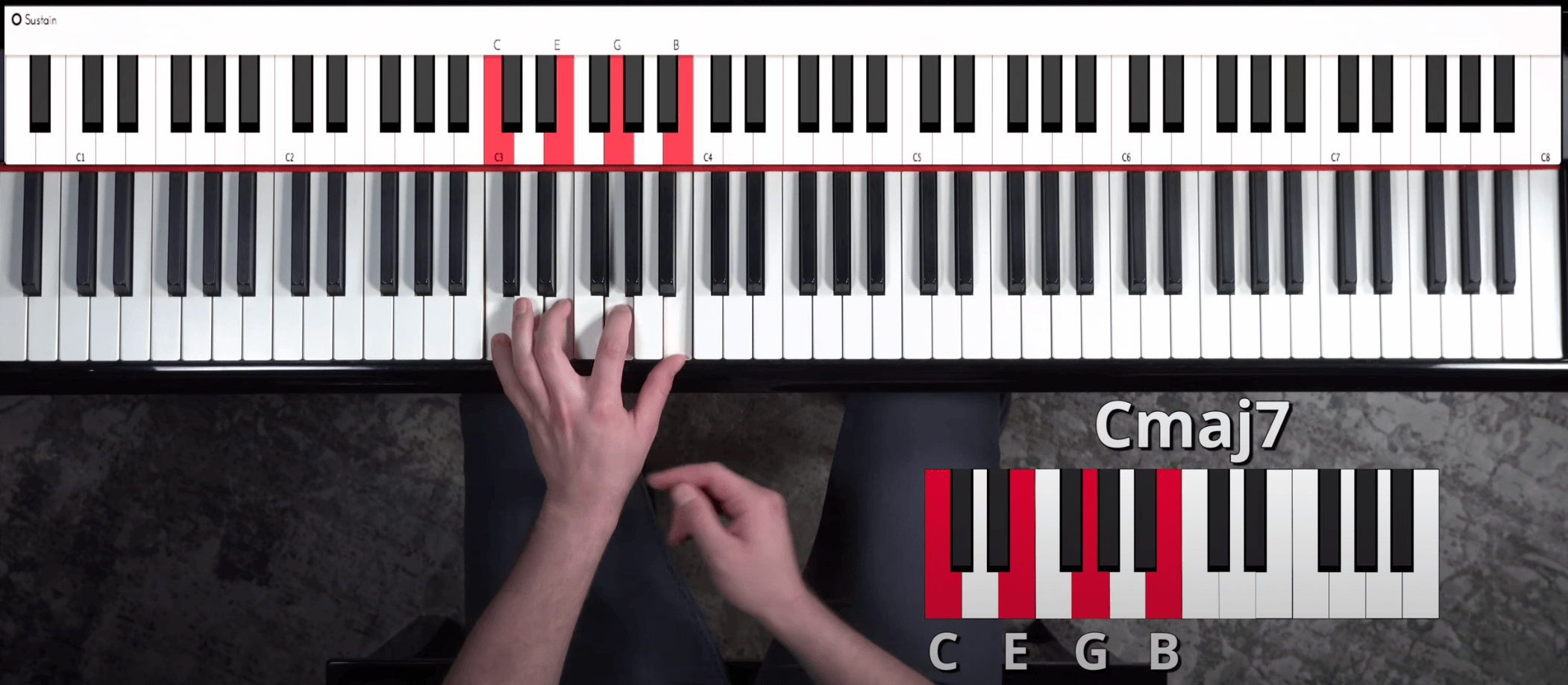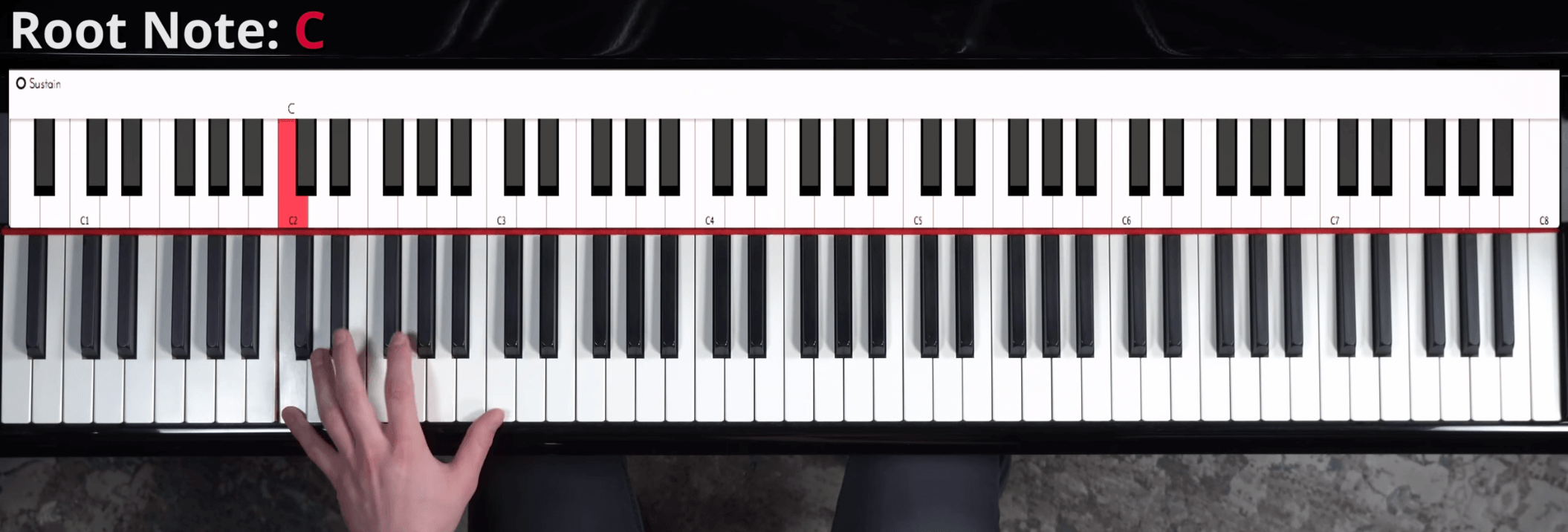Stride piano was a style of jazz piano in the early 20th century.
Ever heard of Oscar Peterson, Scott Joplin, or Fats Waller?
They’re some of the best jazz pianists in history. And they all played stride piano.
Here’s a little taste:
Stride piano involves playing the root note of a chord WAY down on the keys with your left hand, and then jumping (or “striding”) up to play the guide tones (I’ll explain these later) of the chord higher up.
Stride piano is not easy.
I want to be absolutely clear about that. Your left hand will be jumping around a lot.
But even if you have no intention or interest in jazz piano, this stride piano exercise is a fantastic way to develop your piano playing skills.
You may never want to play a stride piano song, but it’s still a skill worth learning, because by practicing stride piano, you’ll also improve your:
In short, learning some basic stride piano exercises will improve all of the key skills that make a great piano player.
So let’s begin.
We’ll use C major 7 for this lesson, but you can apply this stride technique to any 7th chord.
Let’s look at the notes fo the C major 7 chord:

As you can see, we have our C root note, plus the E-G-B.
At the beginning of this post, I mentioned guide tones. Simply, guide tones are the 3rd and 7th notes of the chord.
They are called guide tones because they “guide” what type of chord it will be. The 3rd and 7th tell us whether the chord is major, minor, dominant, etc.
So for our C major 7 chord, the 3rd note is the E, and the 7th note is the B.
Those are the other 2 notes we will play in the left hand.
Okay, enough talking. Let’s stride.
Start by playing the root note (C) LOW down on the keys. We want to leave ourselves some room to stride, so it’s important to play the bass quite low on the piano:

Next, we need to stride up to play those guide tones. Remember we’ll be playing the 3rd and the 7th, which will be E and B.
Play them with your middle finger and thumb, like this:

Notice how big that jump is! Which brings me to the most important point…
Practice this SLOWLY!!
I cannot stress that enough. It’s much more important to be accurate than to be fast, Once you are accurate, then you can work on your speed.
As you practice this, your hands will “remember” where they are supposed to be. But you need to be accurate. Otherwise, they’ll remember all the wrong things!
To practice, simply stride back and forth between the root note and guide tones:
Whaaaaa?!
Just like you can change the order of notes in a chord to make inversions, you can swap the order of the guide tones.
So instead of playing the 3rd and 7th (E and B) you could play the 7th and 3rd (B and E). This is a bit of a bigger jump, but it creates a different sound and is also super handy when you’re striding between different chords.
Stride piano can be really beautiful, and it’s certainly impressive!
So try striding today!
Subscribe to The Note for exclusive interviews, fascinating articles, and inspiring lessons delivered straight to your inbox. Unsubscribe at any time.
Sam Vesely is a graduate from MacEwan University's Bachelors of Jazz and Contemporary Pop Music degree with a major in Composition. His extensive knowledge of music styles and music theory is something that Sam is very proud of and he’s excited to share everything that he has learned with all of the students of Pianote.


By signing up you’ll also receive our ongoing free lessons and special offers. Don’t worry, we value your privacy and you can unsubscribe at any time.
We use cookies for traffic data and advertising. Cookie Policy »